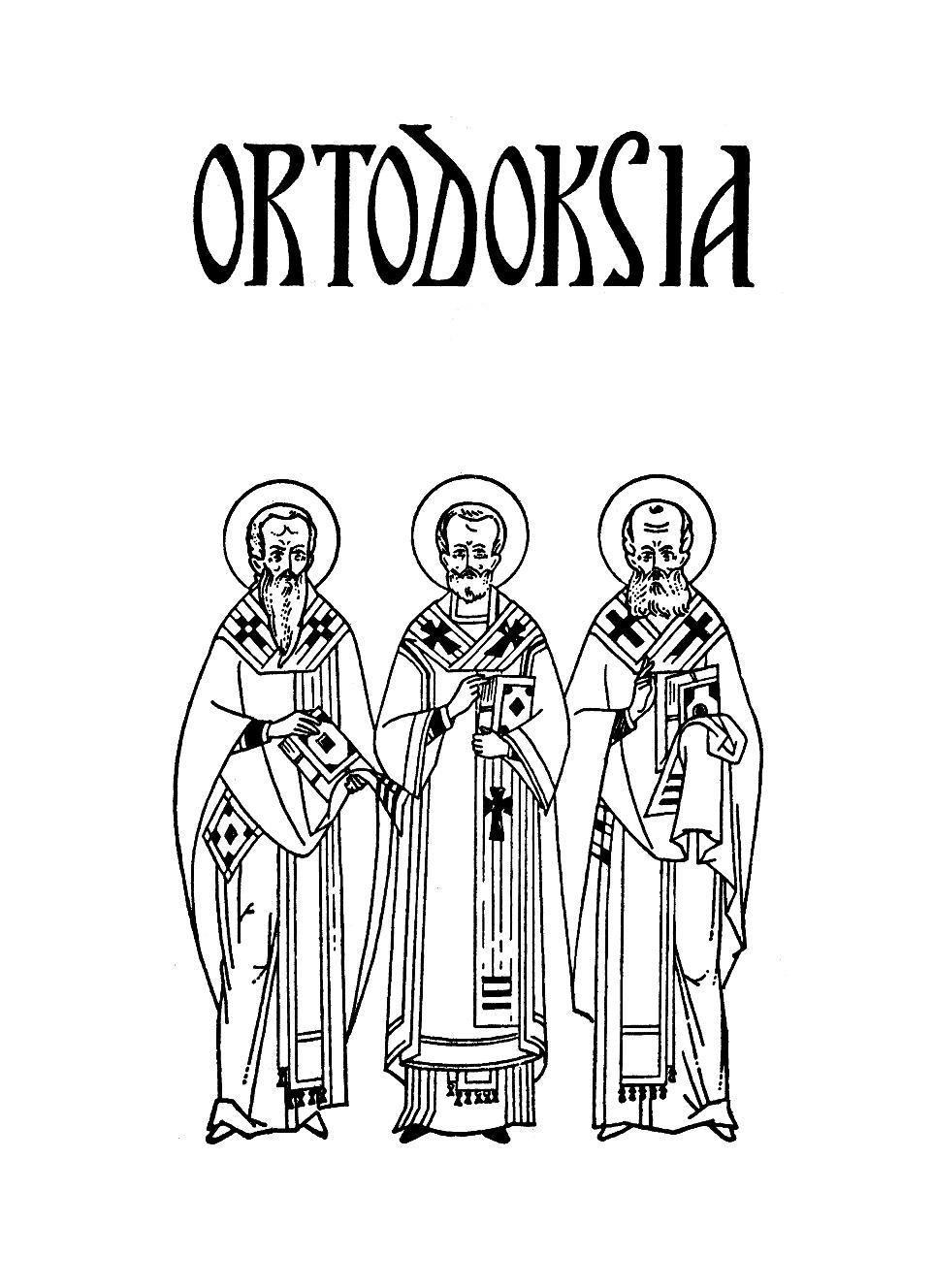What does "The Heresy of the Ishmaelites" by John of Damascene tell about Islam?
Keywords:
John of Damascus, Damascene, Islam, The Heresy of the IshmaelitesAbstract
The second part of John of Damascene’s Πηγή γνώσεως, known as its Latin title De haeresibus, contains 100 to 103 descriptions (depending on manuscript) of teachings considered heretical by the Chalcedonic Church. One of the latest in the De haeresibus is “The heresy of the Ishmaelites”. In most studies thus far, it has been compared with ‘full-fledged’ Sunni Islam, in order to find out what John knew about Islam as it stands now. This kind of analysis ignores the fact that Islam in the early eight century does not necessarily correspond the (much) latter form(s) of Islam. Thus, starting with the presupposition that John talks about contemporary Islam of some community he designates the Ishmaelites (also his name for all Muslims), I read “The heresy of the Ishmaelites” to find out what features and aspects of Islamic teaching and rituals John singles out, and argue that they tell us something about a local community’s understanding of Islam. The edition of De haeresibus I use is the critical version by Bonifatius Kotter (Die Schriften des Johannes von Damaskos IV. Liber de haeresibus. Opera polemica, 1981). My conclusion is that some aspects of Islamic teaching (those concerning the unity of God and the ‘nature’ of Jesus as a prophet, not as Son of God) prevail among the Ishmaelites as strong as among the Muslims today. The role and position of Muhammad (in John’s text, Mamed) and the ‘scriptures’ (the term ‘the Qur’an’ is not used) is more complex. I deduce that the Ishmaelites in John’s text make up a community strongly relying on the oral authority of Muhammad, while the role of the scriptures is still in the making. Further, while earlier scholarship criticises John of inaccurate quotations from the Qur’an, my conclusion is that he reconstructs what he calls ‘scriptures’ from some qur’anic oral traditions. As for the rituals, John portrays the pilgrimage to Mecca in an unfavourable light but does not say a word about the other so-called ‘pillars of faith’, such as fasting and (ritual) praying. Some scholars have argued that John was ignorant of the Islamic ritual life, but I suggest that, either John dismissed them for polemical reasons, or his description corresponds the real situation among the local Ishmaelite community. To sum up, I conclude that John’s critique of “The heresy of Ishmaelites”, if read from non-partisan perspective, gives us a glimpse of some aspects of the early eight century Islam.

References
Abel, Armand 1963. Le chapitre CI du Livre des hérésies de Jean Damascène: son inauthenticité. – Studia Islamica 30. 5–25. https://doi.org/10.2307/1595191.
Awad, Najib George 2018. Umayyad Christianity. John of Damascus as a contextual example of identity formation in early Islam. Piscataway, NJ: Gorgias Press.
Bowsock, G[len] W. 1997. Polytheism and monotheism in Arabia and the three Palestines. – Dumbarton Oaks Papers 51. 1–10.
Brockopp, Jonathan E. 2015. Interpreting material evidence. Religion at the “origins of Islam”. – History of Religions 55 (2). 121–147. https://doi.org/10.1086/683064.
Chrysostomides, Anna 2021. John of Damascus’s theology of icons in the context of eight-century Palestinian iconoclasm. – Dumbarton Oaks Papers 75. 263–296.
Davids, Adelbert & Valkenberg, Pim 2005. John of Damascus: The heresy of the Ishmaelites. – The three rings. Textual studies in the historical trialogue of Judaism, Christianity, and Islam. Ed. by Barbara Roggema, Parcel Poorthuis & Pim Valkenberg. Leuven: Peeters. 71–90.
Eph’al, I[srael] 1976. “Ishmael” and “Arab(s)”. A transformation of ethnological term. – Journal of Near Eastern Studies 35 (4). 225–235.
Ginsburg, Carlo 1996. Johtolankoja. Kirjoituksia mikrohistoriasta ja historiallisesta metodista. Käänt. Aulikki Vuola. Helsinki: Gaudeamus. (Italian- ja englanninkieliset alkuperäisartikkelit ilmestyivät vuosina 1984–1994.)
Hämeen-Anttila, Jaakko 2006. Johdatus Koraaniin. Helsinki: Gaudeamus.
Kontouma, Vassa 2015. John of Damascus (c. 655–c. 745). – Vassa Kountouma, John of Damascus. New studies on his life and work. Farnham: Ashgate, I:1–43.
Koraani 2002. Käänt. Jaakko Hämeen-Anttila. 3. p. Helsinki: Basam Books.
Kotter, Bonifatius 1981. Die Schriften des Johannes von Damaskos IV. Liber de haeresibus. Opera polemica. Berlin: De Gruyter 1981.
Louth, Andrew 2002. St John Damascene. Tradition and originality in Byzantine theology. Oxford: Oxford University Press.
Merrill, John 1951. On the tractate of John of Damascus on Islam. – The Moslem World 41 (2). 88–97.
Pentikäinen, Petra 1988. Uskontojen kohtaaminen 700-luvun Syyriassa. Uskonkäsityksen tulkkina Johannes Damaskolainen. Painamaton uskontotieteen pro gradu -tutkielma, Helsingin yliopisto.
PG = Jacques-Paul Migne (toim.), Patrologia Graeca, 162 osaa. http://www.patristica.net/graeca/.
Rhodes, D. Bryan 2011. John Damascene in context. An examination of “The heresy of the Ishmaelites” with special consideration given to the religious, political, and social contexts during the seventh and eighth century Arab conquest. – St Francis Magazine 7 (2). 96–173.
Sahas, Daniel J. 1972. John of Damascus on Islam. The heresy of the Ishmaelites. Leiden: Brill.
Schadler, Peter 2018. John of Damascus and Islam. Christian heresiology and the intellectual background to earliest Christian-Muslim relations. Leiden: Brill.
Shboul, Ahmad & Walmsey, Alan 1997. Identity and self-image in Syria-Palestine in the transition from Byzantine to early Islamic rule: Arab Christians and Muslims. – Mediterranean Archaeology 11. 255–287.
Smart, Ninian 1983. Worldviews. Crosscultural explorations of human beliefs. New York: Charles Scribner’s sons.
Smith, Jonathan Z. 1982. In comparison magic still dwells. – Jonathan Z. Smith, Imagining religion. From Babylon to Jonestown. Chicago: The University of Chicago Press. 19–35.
Summa, Hilkka 1995. Retoriikka ja argumentaatioanalyysi yhteiskuntatutkimuksessa. – Laadullisen tutkimuksen risteysasemalla. Toim. Jaakko Leskinen. Helsinki: Kuluttajatutkimuskeskus, 67–89.
Thomas, David 2006. Christian theologians and new questions. – The encounter of Eastern Christianity with early Islam. Ed. by Emmanouela Grypeou, Mark Swanson & David Thomas. Leiden: Brill, 257–276.
Whealey, Alice 2013. Muslim motives for conquering the Byzantine Empire 634–720. The evidence from Eastern Christian sources. – Russian History 40 (1). 9–26. https://doi.org/10.1163/18763316-04001002.
Downloads
Published
Issue
Section
License
Copyright (c) 2022 Ortodoksia

This work is licensed under a Creative Commons Attribution 4.0 International License.


